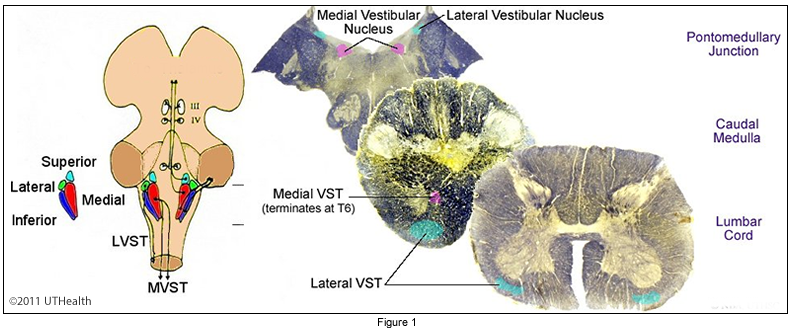Lab 6 (ƒ9) Descending Pathways to the Spinal Cord
Vestibulospinal Tract
The lateral vestibulospinal tract arises mainly from the lateral vestibular nucleus. It appears to exert a facilitatory influence on reflex activity of the spinal cord and on spinal mechanisms which control muscle tone of the antigravity muscles. The fibers of the lateral vestibulospinal tract are uncrossed and are located in the anterior funiculus. The fibers terminate at all levels of the cord, with the majority ending in the cervical and lumbar segments. The lateral vestibular nucleus receives inputs from the vestibular division of the vestibulocochlear (VIII cranial) nerve, the contralateral vestibular nuclei, and specific parts of the cerebellum. Thus, this tract provides vestibular and cerebellar influences on the spinal reflexes and spinal mechanisms that control antigravity muscle tone and activity.
The medial vestibulospinal tract is a small fiber bundle that originates in the medial vestibular nucleus. It exerts a facilitatory influence on the reflexes and tone of the neck muscles. The fibers are bilateral, but largely uncrossed, and descend in the medial longitudinal fasciculus and anterior funiculus. They end predominantly at cervical and upper thoracic spinal cord levels. The medial vestibular nucleus receives input from the vestibular nerve and the contralateral vestibular nuclei.

